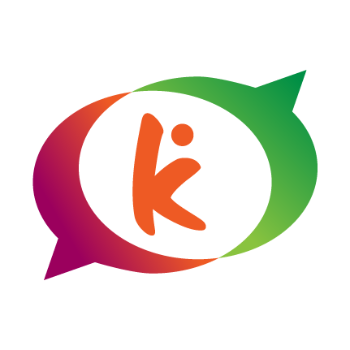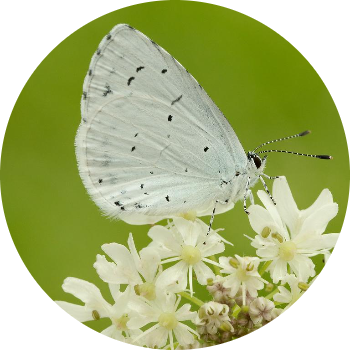Are you willing to share your answers to EHCP section E? If yes, please make sure you remove personal data, such as names.
A: SenseCheck

- 9 Yes
- 0 No
- 1 Other
- 17 Jan 2022
-
Yes
|
Complex
PART E - MY OUTCOMES (WHAT I WANT TO ACHIEVE)
[EHCP: Amended Final Following Appeal Hearing and 1st Tier SENDIST Decision]
Long term aspirations
In relation to Communication and Interaction
- [child] will develop his social communication and will have significantly reduced the differential he has in this area between himself and his unimpaired peers.
- [child] will develop his language and communication skills and will have significantly reduced the differential he has in these areas between himself and his unimpaired peers.
In relation to Education and Learning
- [child] will develop his attention and learning skills and will have significantly reduced the differential he has in these areas between himself and his unimpaired peers.
In relation to Physical and Sensory needs
- [child] will develop his fine motor skills and will have significantly reduced the differential he has in this area between himself and his unimpaired peers.
In relation to Social, Emotional and Mental Health needs
- [child] will be better able to manage his anxiety and develop his self- regulation skills and will have significantly reduced the differential he has in these areas between himself and his unimpaired peers.
- [child] will be better able to manage the adverse effects associated with his sensory impairments and will have significantly reduced the differential he has in this area between himself and his unimpaired peers.
- [child] will continue to attend mainstream school and learn alongside his peers.
Outcomes
In relation to Communication and Interaction
(1) [child] will be able to communicate effectively in order to express his wants, needs, thoughts, feelings and ideas more successfully throughout the day. >> By the end of Key Stage 2
(2) [child] will develop his understanding and expressive language skills so that he is able to consistently process instructions with 4 key words or concepts. >> By the end of Key Stage 2
(3) He will be able to form key word sentences and ask questions with a range of ‘wh’ questions. such that the differential between [child] and his peers in this area is significantly reduced >> By the end of Key Stage 2
(4) [child] will measurably develop practical and functional communication skills across different settings to significantly reduce the differential between himself and his unimpaired peers. >> By the end of Key Stage 2
(5) [child] will measurably develop his social communication skills and will have significantly reduced the differential he has in this area between himself and his unimpaired peers. >> By the end of Key Stage 2
In relation to Education and Learning
(1) Attention: [child] to increase his focus on non-preferred tasks by managing self-regulation. >> By the end of Key Stage 2.
(2) [child] to significantly develop his skills to work with a written timetable to help him follow and understand the routines and expectations of working within school and also to enable him to be significantly better to be able to understand transitions between activities and feel prepared so he can accept new or unexpected situations. >> By the end of Key Stage 2
(3) [child] will measurably develop his attention and listening skills and will have significantly reduced the differential he has in these areas between himself and his unimpaired peers. >> By the end of Key Stage 2
(4) [child] will measurably develop his learning skills in maths and English and will have significantly reduced the differential he has in these areas between himself and his unimpaired peers. >> By the End of Key stage 2
In relation to Physical and sensory needs
(1) Handwriting: [child] to be able to independently write a sentence using a tripod grip and appropriate sizing of letters. >> By the end of Key stage 2
(2) Feeding: [child] will be able to co-ordinate knife and fork movements and eat school dinners, independently. >> By the end of Key Stage 2.
(3) Dressing: [child] to be able to independently dress the top half of his body, putting on clothes the correct way. >> By the end of Key Stage 2.
(4) Toileting: [child] to be able to go to the toilet in school independently when required. >> By the end of Key stage 2.
(5) [child] to be able to wipe his bottom after bowel movement and attend to his personal hygiene after using the toilet. >> By the end of Key Stage 2
(6) Sensory: [child] to have safe and appropriate chewable toy to satisfy his sensory needs. >> By the end of Key Stage 2
(7) [child] will measurably develop his fine motor skills and will have significantly reduced the differential he has in this area between himself and his unimpaired peers. >> By the end of Key Stage 2
(8) [child] will measurably develop his handwriting skill and will significantly reduce the differential he has in this area between himself and his unimpaired peers. >> By the end of Key Stage 2
(9) [child] will measurably develop his independence and self-care skills and will significantly reduce the differential he has in this area between himself and his unimpaired peers. >> By the end of Key Stage 2
Social, Emotional and Mental Health
(1) [child] will be better able to manage his anxiety and developed his self-regulation skills and will have significantly reduced the differential he has in these areas between himself and his unimpaired peers. >> By the end of Key Stage2
(2) [child] will be better able to manage the adverse effects associated with his sensory impairments and will have significantly reduced the differential he has in this area between himself and his unimpaired peers. >> By the end of Key Stage 2
Shorter term targets will be set at the annual review and termly meeting with me and my parents as part of the individual planning process.
Within two months of the Final Plan, the SENCO/College Learning Support Co-ordinator, in consultation with me, parents and the appropriate professionals, will establish short term educational targets, clearly identifying the desired outcomes listed within this Plan, and measurable criteria for success. These targets and criteria for success should be clearly documented, together with details of the programmes, activities, materials and equipment to be used, as well as the frequency and level of support and the arrangements for review, following the outcomes that have been identified within this Plan.
- 19 May 2021
-
Yes
|
Other
[section E was combined with F, G, H in the original EHCP]
Communication and Interaction
(E) Outcome(s) sought for the child or young person, by the end of the current Key Stage or phase of education, which relate to any communication and interaction needs summarised in Section B:
By the end of the next Key Stage:
[child] will develop vocabulary skills to within the average range.
[child] will be able to interact verbally with a small group of children about age appropriate topics
[child] will be able to demonstrate an understanding of what is being asked of him, and what is being taught in the classroom
Cognition and Learning
(E) Outcome(s) sought for the child or young person, by the end of the current Key Stage or phase of education, which relate to any cognition and learning needs summarised in Section B:
By the end of the next Key Stage:
[child] will respond to an instruction the first time.
[child] will show improved concentration and listening by differentiating key information within the classroom and wider environment
[child] will be able to repeat back the task instruction and/or key information.
[child] will make mathematical progress – demonstrated by increasing standard scores which will indicate the gap is closing.
[child] will take more responsibility for his learning, for example by signalling he needs help when he hasn’t understood something.
[child] will be able to respond to questions about text that he has read
[child] will make academic progress across the curriculum and narrow the gap in his learning
Social, Emotional and Mental Health
(E) Outcome(s) sought for the child or young person, by the end of the current Key Stage or phase of education, which relate to any social, emotional and mental health needs summarised in Section B:
By the end of the next Key Stage:
[child] will make and maintain at least one friendship
[child] will develop the skills to respond appropriately in social situations
[child] will be a part of and will positively contribute to a wider social community group
Physical and/or sensory
(E) Outcome(s) sought for the child or young person, by the end of the current Key Stage or phase of education, which relate to any physical and/or sensory needs summarised in Section B:
By the end of the next Key Stage:
[child] will become more aware of his posture and invading others’ personal space
Self care and independence (including preparation for adulthood)
(E) Outcome(s) sought for the child or young person, by the end of the current Key Stage or phase of education, which relate to any self care and independence (including preparation for adulthood) needs summarised in Section B:
By the end of the next Key Stage:
[child] will carry out basic tasks independently without requiring adult prompts, for example, brushing his teeth
[child] will be able to organise himself and follow the routine of the school day - 13 May 2021
-
Other
|
Other
Other ...:
[removed at request of parent]
- 07 May 2021
-
Yes
|
Other
Section E
To achieve his full academic potential and aspirations to be independent in adult life and succeed in adult employment:
[child] will understand money and change and be able to do simple money and change calculations in his head. He will also be able to read a clock with hands and calculate time.
[child] will be able to touch type so that he is able to complete homework independently.
To further develop his IT skills so that he is able to. Carry out research and develop skills necessary for a workplace
[child] will have developed his organisational skills so that he can pack his bag for lessons, know what homework he has to do and make sure he has done it on time and handed it in on time.
[child] will develop his ability to independently carry out tasks of daily living:
[child] will be able to independently use a picture/written recipe to cook a boiled egg for breakfast, with adult supervision. [child] will be able to cook a simple meal following a simple recipe using sharp knives without hurting himself.
[child] will be able to independently go to a local shop and ask for items and be understood. [child] will be able to add up the price of two items, know how much money he needs and how much change he should get and check his change is correct. [child] will be able to appreciate the price and value side of items, eg. he will be able to say how much an item may cost and will realise what is more expensive.
[child] will be able to independently carry out his self care needs e.g showering, cutting nails, selecting his own clothes appropriately according to the weather.
[child] will be able to manage and organise his time, diary and appointments with limited support.
[child] will have an understanding of his own health and care needs so that he is able to recognise when he needs to visit the doctor. [child] will also be able to administer medicines, creams, and ear drops with limited support.
[child] will be able to initiate and maintain short conversations with unfamiliar peers.
[child] will develop his communication confidence with peers and his ability to develop and maintain friendships:
[child] will be able to introduce himself and say hello at the beginning of an activity/meeting which involves other unfamiliar young people.
[child] will be able to use polite questions to ask peers and less familiar adults to slow down and repeat information when he has not understood or cannot remember what they have said.[child] will be able to introduce himself and say hello at the beginning of an activity/meeting which involves other unfamiliar young people.
[child] will be able to use strategies such as slowing down, repeating, and asking if the listener has understood, during a conversation with a familiar/unfamiliar adult in the community e.g. a shop owner.[child] will be able to use polite questions to ask peers and less familiar adults to slow down and repeat information when he has not understood or cannot remember what they have said.
[child] should be able to work productively and generate an income appropriate to his abilities with an appropriate progression path and therefore provide a meaningful and fulfilling daily life.[child] will be able to use strategies such as slowing down, repeating, and asking if the listener has understood, during a conversation with a familiar/unfamiliar adult in the community e.g. a shop owner.
[child] should have an enriching social life focused around his personal areas of interest and new areas of interest of his choice with appropriate like-minded peers. [child] should be able to work productively and generate an income appropriate to his abilities with an appropriate progression path and therefore provide a meaningful and fulfilling daily life.
[child] will continue to develop his independence skills so that he can have a fulfilled and enriching independent life:
[child] will develop strategies to keep himself safe in the community. He will be make decisions to keep himself safe so that he can travel independently.[child] should have an enriching social life focused around his personal areas of interest and new areas of interest of his choice with appropriate like-minded peers.
[child] should understand potential dangers and threats in adult life and understand the presence of, and how to use, the support network around him that is intended to provide pastoral care and protection for him[child] will develop strategies to keep himself safe in the community. He will be make decisions to keep himself safe so that he can travel independently.
[child] should understand potential dangers and threats in adult life and understand the presence of, and how to use, the support network around him that is intended to provide pastoral care and protection for him - 30 Apr 2021
-
Yes
|
Other
Section E:
Health Outcomes
[On the EHCP form Section E outcomes are listed beside the Section G ‘Provision to meet outcome’ / ‘Amount and Frequency of Input’ / ‘Who is responsible’.]
The impact of [child]'s scoliosis, kyphosis, lordosis, hip dysphasia, tight hips, hamstrings, ankles, wrists, shoulders, valgus and pronating feet will be minimised in the home/school environment through following the physiotherapist's advice.
See outcomes a) to h)
See outcomes a) to h)
Social Care Outcomes (i)
[On the EHCP form Section E outcomes are listed beside the Section H1 ‘Provision to meet outcome’ / ‘Amount and Frequency of Input’ / ‘Who is responsible’.]
i) [child] will be supported by Social Care to ensure that he is:
• in optimal health;
• accessing appropriate education;
• achieving independence appropriate to his ability;
• accessing community activities;
• developing friendships with peers;
• increasing his communication - 28 Apr 2021
-
Yes
|
Other
E (includes Section F)
1/
By end of Reception, [child] will have achieved age appropriate literacy and numeric skills
Steps:
[child] to receive a targeted, individualised programme to support literacy and numeracy attainment.
EHCP F:
Adult support to support [child] on daily basis during literacy and numeracy and to provide an individualised programme. Reviewed by the class teacher on a monthly basis.
2/
By the end of Reception, [child] will be able to follow longer and more complex instructions spoken to him, in school, at home and in his wider community, and to be able to ask for help if he has not understood an instruction.
Steps:
By the end of Nursery Year [child] will:
• Be able to focus within smaller and larger groups in nursery with picture support.
• Take part in small group activities with peers which promote attention to, and actin on, verbal instructions.
• Demonstrate consistent understanding of instructions containing 3 key pieces of information (3 'key' words).
By the end of Reception Year [child] will:
• Demonstrate 'whole body listening skills' while listening to his teacher and peers in a small group, larger groups and whole class settings.
• Take part in small and larger group activities with peers which promote attention to, and acting on, verbal instructions.
• Be able to ask for help e.g. by saying 'help' if he has not understood an instruction.
• Demonstrate understanding of longer verbal statements and instructions with 4 ke ieces of information 4 'ke words' .
ECHP F:
• The SALT will give ·advice to school staff on strategies to use in the classroom to help [child] communicate and school staff will use strategies daily e.g. simplifying own language.
• The SALT will deliver a mixture of one to one, small group or in-class (from Reception Year) sessions alongside school staff.
• School staff will deliver a communication group to work on [child]'s communication outcomes twice per week.
• Parents are able attend and observe SALT sessions in school (please contact SALT/SENCO to arrange).
SALT resources required to achieve all outcomes involving SALT input:
Direct
• 4 x 45-minute small group in clinic or in class (from Reception Year) sessions per academic term
• 2 hours SALT time per term for planning, preparation, resource making and case note writing
Environment & Partners
• Ninety minutes in the first term SALT time and 30 minutes thereafter per term to meet with parents & school staff to agree communication and interaction targets
• 1.5 hours SALT time per term to support environment and partners
Target Setting, Review and Reporting
• 2 x 90 mins SALT time per year until [child] reaches 5 years of age.
• Once [child] turns 5 he will require 3.5 hours SL T time per academic year to contribute to the annual review process'
Reviewed by/when:
The SALT will meet with [child]'s communication partners such as class teacher, LSA, parent to agree SMART targets and appropriate timeframes for review.
Targets will be reviewed by the SALT and [child]'s communication partners at the end of each agreed review period. Progress will be reviewed at least termly.
3/
By the end of Reception, [child] will be able to answer questions in the classroom, at home and in the community and share his ideas and feelings.
Steps:
By the end of Nursery Year [child] will:
• Understand and respond to 'who?', 'where?' and 'what doing?' questions about pictures and stories in 1:1 or small group sessions
• Structure his responses to questions using visual/colour-coded sentence strips
• Retell a simple story or event with the help of a visual story planner
• Take part in small group conversations in the classroom / at home/ in the wider community with the help of an adult
By the end of Reception Year [child] will:
• Understand and respond to 'who?', 'where?', 'what doing and 'when?' questions about pictures and stories in 1 :1, small or larger group sessions
• Structure his responses to questions using visual/colour-coded sentence strips
• Retell a simple story or event with the help of a visual story planner
• Recount the events of his day to his parents when he gets home
• Take part in small group conversations in the classroom /at home/in the wider community with minimal support from an adult
• Use language to ask questions and state his feelings at school, at home and in the wider community
EHCP F:
What is going to happen:
• The SALT will give advice to school staff on strategies to use in the classroom to help [child] communicate and school staff will use strategies daily
• The SALT will deliver a mixture of 1: 1, small group or in- class ( from Reception Year) sessions alongside school staff.
• School staff will deliver a communication group to work on [child]'s communication outcomes twice per week.
• Parents are able attend and observe SALT sessions in school (please contact SALT/SENCO to arrange) .
SALT resources required to achieve all outcomes involving SALT input: Direct
- 4 x 45-minute small group in clinic or in class (from Reception Year) sessions per academic term
- 2 hours SALT time per term for planning, preparation, resource making and case note writing
Environment & Partners
• Ninety minutes in the first term SALT time and 30 minutes thereafter per term to meet with parents & school staff to agree communication and interaction targets
• 1.5 hours SALT time per term to support environment and partners
Target Setting, Review and Reporting
• 2 x 90 mins SALT time per year until [child] reaches 5 years of age.
• Once [child] turns 5 he will require 3.5 hours SL T time per academic year to contribute to the annual review process'
• 2 hours SALT time per term for planning, preparation, resource making and case note writing
Environment & Partners
• Ninety minutes in the first term SALT time and 30 minutes thereafter per term to meet with parents & school staff to agree communication and interaction targets
• 1.5 hours SALT time per term to support environment and partners
Target Setting, Review and Reporting
• 2 x 90 mins SALT time per year until [child] reaches 5 years of age.
• Once [child] turns 5 he will require 3.5 hours SL T time per academic year to contribute to the annual review process'
Reviewed:
The SALT will meet with [child]'s communication partners such as class teacher, LSA, parents to agree SMART targets and appropriate timeframes for review.
Targets will be reviewed by the SALT and [child]'s communication partners at the end of each agreed review period. Progress will be reviewed at least termly.
4/
By the end of Reception, [child] will be able to sound out (and read) at least 10 Consonant Vowel Consonant (CVC} words.
Steps:
• [child] will learn the typical sound corresponding to each letter of the alphabet and, depending on the curriculum of his school, will also learn the names of each of the letters of the alphabet.
• [child] will learn to sound out letters within a eve word and will learn to blend the word together.
EHCP F:
An adult (i.e. teacher or LSA) will support [child] to develop his early literacy skills at least once per day. This may occur as one on one or small group teaching with other children at a similar level.
Review: [child]'s SENCo and teachers at school will review once per month or as deemed appropriate.
5/
By the end of Reception, [child] will be able to correctly count out up to 10 objects.
Steps:
• [child] will consolidate his understanding of numbers up to three and gradually learn to count out objects up to 10.
• An adult can give [child] hand over hand support to help him point at each object in turn as he counts it.
EHCP F:
[child] will receive adult support with counting each day at school. This may be pre-planned individual su art e. . maths lesson or incidental teaching (e.g. how many children are on the swings? Let's count them).
review:
[child]'s SENCo and teachers at school will review once per month or as deemed appropriate.
6/
By the end of Reception, [child] will notice when saliva is escaping his mouth and will use a cloth/tissue/his necktie to wipe the saliva away.
steps:
• [child] will need to build his awareness of when there is saliva escaping his mouth. Adults can help by pointing out that his chin is wet or showing him his face in the mirror.
• Adults will initially need to prompt [child] to wipe his face and can give hand over hand assistance to help [child] wipe his own face.
• Adults should initially aim for [child] to be able to wipe his face with prompting and should subsequently aim for him to use his own initiative to wipe his face. It may be beneficial for [child]'s regular OT to provide support with this goal.
EHCP F:
Adults working with [child] will help to teach him to wipe his face and point out that his face is wet as appropriate.
Review:
[child]'s SENCo and teachers at school will review once per month or as deemed appropriate. - 28 Apr 2021
-
Yes
|
Other
Section C
[Outcomes, below, relate to Special Education Needs given in Section B]
Cognition and Learning:
By the end of Key Stage 1, [child] will:
Successfully transition from nursery to the school environment, measured by his attendance and engagement.
Be able to correctly demonstrate knowledge and recognition (using concrete resources/pictures/verbal expression) of 3 colours, shapes and numbers when tested on 4 out of 5 different occasions.
Communication and Interaction
By the end of Key Stage [child] will:
By the end of his reception year [child] will be able to engage in language based tasks with an adult for up to 20 minutes.
Receptive Language
By the end of his reception year [child] will be able to demonstrate understanding of instructions at a three word level and understanding of basic language concepts big/little.
Expressive Language
By the end of his reception year [child] will be attempting 15 different Makaton signs to communicate his needs/ideas.
By the end of his reception year [child] will be able to indicate his choice of 'conversation' topic in his communication book by finger pointing to a symbol on the front page when given a choice of two by an adult who models it for him. e.g. "shall we talk about people or food?"
By the end of his reception year [child] will be able to use his communication book to copy a 'two word phrase' (linking two symbols together by pointing at one and then the other) after an adult has modelled this for him e.g. "want cake".
[child] will be given opportunities to express his choices during his daily routine for example, regarding food and play activities. These opportunities may be provided through objects and/or symbols/choice boards.
[child] will be able to use intentional vocalisations alongside non-verbal communication (i.e. his AAC system), on 50% of occasions.
Social, Emotional and Mental Health
By the end of Key Stage [child] will
Be able to take part in a motivating adult led social activity with at least one of his peers for up to 15 minutes daily.
Have a range of ways to communicate his sadness or frustrations to an adult, so that they can work with him to find a resolution.
Other e.g. Sensory and Physical/Independence and Self-care
By the end of Key Stage, [child] will
To be mobile on the floor by commando crawling or 4 point crawling.
To mobilise with his kaye walker with minimal adult support around a small environment, in order to access activities of his choice and join in with his peers.
To demonstrate the ability to pull himself to stand at a supportive surface.
To be active for outdoor sessions using a walker, trike or walking with handhold.
[child] will be able to move between sitting and kneeling independently up to a supportive surface and pull to stand with minimal assistance.
[child] will be able to consistently step into and out of his standing frame with handhold of one adult.
[child] will be able to complete active reaching activities in his standing frame for 30 minutes with the rocker base in place for 10 minutes, without his posture deteriorating.
[child] will be able to participate in an adapted PE curriculum with assistance of one person, alongside his peers, with the use of equipment as required. - 28 Apr 2021
-
Yes
|
Other
Section E:
[Outcomes below, relate to Health Care Needs listed in Section C]
[child] to enjoy bath time safely and comfortably in his bath aid with support and supervision of parents/carers.
To be mobile on the floor by commando crawling or 4 point crawling.
To mobilise with his kaye walker with minimal adult support around a small environment, in order to access activities of his choice and join in with his peers.
To demonstrate the ability to pull himself to stand at a supportive surface.
To be active for outdoor sessions using a walker, trike or walking with handhold.
[child] will be able to move between sitting and kneeling independently up to a supportive surface and pull to stand with minimal assistance.
[child] will be able to consistently step into and out of his standing frame with handhold of one adult.
[child] will be able to complete active reaching activities in his standing frame for 30 minutes with the rocker base in place for 10 minutes, without his posture deteriorating.
[child] will be able to participate in adapted outdoor activities with assistance of one person, alongside his peers, with the use of equipment as required. - 28 Apr 2021
-
Yes
|
Other
E: outcomes
[This section was presented as a table in the EHCP document. With columns: Section A ‘my life’ / SEN (B,C, D) / E Outcomes / F provision.]
(E) Outcomes to be achieved Long Term (End of KS1)
(E) Outcomes to be achieved Short Term (Within 12 months)
Communication & Interaction:
[child] presents with significant social communication difficulties in keeping with his diagnosis of ASD
Long term:
[child] will interact with a range of people (both children and adults) at home and at school.
[child] will begin to recognise and name basic facial expressions on himself and others
[child] will ask a peer to play with him
[child] will take part in a treasure box activity with 2 peers
Short term:
[child] will interact with a small group of peers and adults during structured games or activities for at least 10 minutes
By end of year 1 [child] will be able to attend at least one whole class session each day
[child] will look in a mirror and play at making different facial expressions with a supporting adult [child] will ask a specific question to all the adults in the room and wait for the answer
[child] will be supported by an adult to ask a peer to play with him before he inadvertently imposes his agenda on them without warning
[child] will take part in a treasure box activity for 5 minutes with an adult
Long term:
[child] will have developed his understanding of friendships, in order to make and maintain key friendships with at least two peers.
Short term:
To continue to enhance [child]’s ability to share in two or more different contexts.
Cognition & learning:
[child]’s difficulties with understanding will impact on his ability to participate in activities and access the curriculum as well as his ability to follow daily routines and familiar instructions at even a simple level.
[child] continues to have difficulty following adult-led teaching and instructions
[child] has struggled to develop his early literacy and numeracy skills
Long term:
[child] will be an active participant in learning
[child] will transition calmly from activity to activity and to different areas of the school
Short term:
[child] will understand and follow instructions in small group settings
[child] will follow multi-step instructions with at least three components
[child] will share something he likes with another child for 2 minutes using visual support to clearly define the behaviour that is expected
Long term:
To increase his learning and attention skills in class in order to interact and engage with the learning environment.
To develop literacy and grammatical skills
To develop numeracy skills
To make progress across the curriculum
Short term:
Literacy
To use phonic knowledge to blend sounds together to read words - including long phonemes
To compose a short sentence orally and write it with some independence
Numeracy
To read, write and interpret mathematical statements involving addition, subtraction and equals signs.
Cognition & Learning
[child] is not yet an independent learner and requires the support of an adult to enable him to learn.
[child] at times finds it difficult when transitioning from one activity to the next.
Long term
[child] will develop greater independence across the school day on a number of adult directed tasks.
Short term
[child] will complete one short pre-taught activity at his workstation every day when it is followed by an immediate reward.
[child] will complete a stretch activity on now/next board with minimal adult support for at least half the time
[child] will take his prompt strip to his individual visual routine to check his plan and remove the pictures as each event passes by putting them into a “finished” pouch with adult support
Sensory and/or Physical
[child] experiences difficulties with toileting
[child] experiences difficulties with his dressing
[child] has difficulty with holding onto cutlery appropriately and co-ordinating both hands together to use a knife and fork
[child] has difficulty with holding onto scissors appropriately and with cutting along a straight line
Long term:
To be independent with dressing and toileting
Short term:
To be independent with toileting
To be able to hold onto a knife and fork together in both hands correctly
Social, emotional and mental health:
[child] experiences difficulties regulating his emotions.
[child] at times expresses himself through pre-symbolic means (e.g. facial expression, running away, aggression) and symbolic means (e.g. Short phrases).
Long term
[child] will develop strategies to regulate his emotions and address his current need to bit, kick, punch, pinch and push
[child] will recognise happy, sad and angry emotions in himself and then in others
[child] will use his calming routine with adult support before doing an activity or going to a place he might find anxiety provoking
Short term
[child] will continue to develop his ability to self-regulate his emotions.
[child] will continue to develop his ability to cope with change and to develop strategies to reduce and manage his feelings, frustration and anxiety, resulting in a reduction in aggressive behaviour.
[child] will be able to take part in a class if his usual teacher is not present.
[child] will not use toys that have the “not available” sign on them when supported by a familiar adult.
[child] will name happy, sad and angry emotions.
[child] will learn a short calming routine followed by a reward. - 25 Mar 2021
-
Yes
|
Simple
Outcomes
Communication and Interaction
My long term outcome
I will develop my language and communication skills by increasing my vocabulary and start to say words. Why this is important to me
To build confidence with communication to help avoid frustration.
This will happen by the end of Key Stage 1
Objectives over the next 12 months
I will be able to have a short conversation with a wider range of school staff and peers throughout the day
I will be able to follow 3 key word instructions for 7 /10 in set activities and in class/Green Room
I will be able to use familiar action words in a
S-V-O phrase, including the little words: 'the girl is eating an apple'
I will be able to express myself clearly when I don't like or don't want to do something
I will develop my understanding of action words so that I can label the following: push, touch, chase, carry, watch, wear
Cognition and Learning
My long term outcome
I will work with numbers up to 10 in Maths
I will read simple repetitive sentences
I will write my first name
Why this is important to me
So I am able to access the curriculum and early concepts This will happen by the end of Key Stage 1
Objectives over the next 12 months
I will develop my 1: 1 correspondence skills counting objects up to 5.
I will read 5 Reception key words from memory.
I will be able to trace simple shapes and letters.
Social1 Emotional and Mental Health Difficulties
My long term outcome
I will develop my social interaction and play skills to a level where I can:
• Express my feelings when I am unhappy with the situation or activity
• Play with others (as opposed to alongside peers)
Objectives over the next 12 months
I will share a game or activity with one other child
Sensory and/or Physical Needs
My long term outcome
I will change for PE independently
I will consistently say when my hearing aid is not working
I will be able to run and jump
Why this is important to me
So I can develop my self-help and independence skills
This will happen by the end of Key Stage 1
Objectives over the next 12 months
I will wear my insoles and school boots
I will put my coat on independently
I will climb down on equipment
I wil work with the LSA to identify when my hearing aid is not working










|
Comment